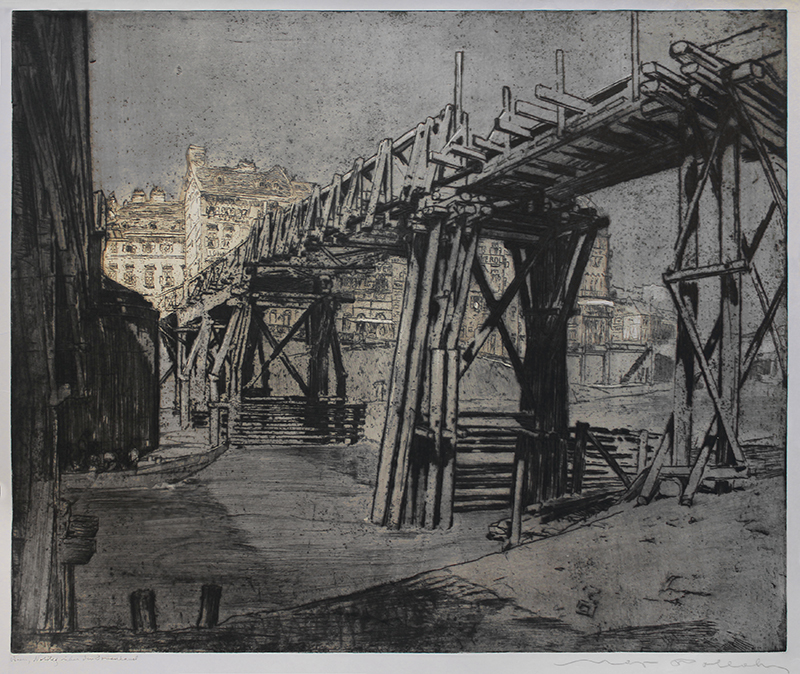
19th, 20th & 21st Century Fine Prints
707-546-7352 · fax 707-546-7924 · web: www.annexgalleries.com · email: artannex@aol.com
Wien, Notsteg Uber den Donaukanal by Max Pollak

Wien, Notsteg Uber den Donaukanal
Max Pollak
Wien, Notsteg Uber den Donaukanal
Max Pollak
1886 - 1970 (biography)Max Pollak was born in Czechoslovakia and raised in Vienna, Austria. A printmaker with a long and productive career, his intaglio subjects included genre, land and cityscapes, and portraits from throughout Europe, the Holy Land, the United States, and Latin America.
This large etching was likely created when Pollak was employed as an artist by the Austrian Army to chronicle World War I. Pollak was based in Vienna, Austria, and did many of his early etchings based on his war observations around Vienna. As an artist, he had access to the cities and battlefields where he captured the destruction inflicted both physically and psychologically.
The composition leads the viewer across the canal and up to a group of old Viennese apartments, illuminated by the sun in an otherwise shaded landscape. To the left along the canal's banks, a small boat is piloted beneath the temporary span.
Loosely translated as "Vienna, Emergency Pier Over the Danube Canal," this large etching depicts a wooden bridge, built as a stopgap measure, probably replacing a bridge that had been destroyed during WWI. Pollak "attacks" the plate with deep-bitten etched lines that form a tunnel of timbers and then creating textures by using a dirty wipe and the foul bite or sandpaper aquatint to create a rough tone. The skies and bridge are printed using gray ink and the buildings in the background have a light brown/gray aura.
Many of Pollak's European prints were confiscated by the Nazis, who considered them "decadent" because he was Jewish. There were only proof impressions printed from this plate.
